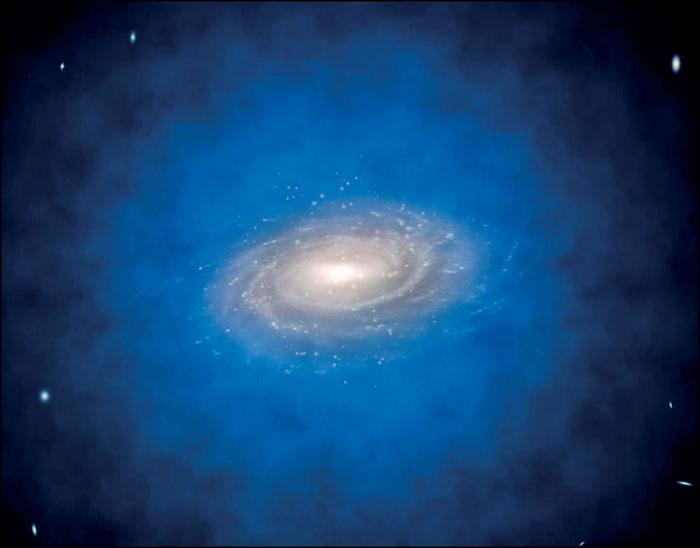Supermassive black holes could be formed out of dark matter, scientists say

Supermassive black holes could be formed out of dark matter, a new study has suggested.
The research aims to address the mystery over the gargantuan cosmic objects: the seemingly impossible problem how exactly they form, and so quickly.
Researchers have observed supermassive black holes as early as 800 million years after the Big Bang. It is not clear how they could form in such little time, or how they were initially created.
Usually, scientists explain their growth with reference to “normal” or baryonic matter, the same material that makes up the stars and planets that surround us.
But the new research suggests there might be stable galactic cores that are instead made out of dark matter, and surrounded by a diluted halo of the same material. Their centres could become so concentrated that they reach a point at which they are no longer to support themselves and collapse, leaving behin da supermassive black hole.
That would happen much more quickly than other mechanisms that have been proposed, they suggest. That would explain why such black holes are able to form so quickly, even before the galaxies that surround them exist.
“This new formation scenario may offer a natural explanation for how supermassive black holes formed in the early Universe, without requiring prior star formation or needing to invoke seed black holes with unrealistic accretion rates,” said Carlos R Argüelles, from Universidad Nacional de La Plata, who led the research published in the Monthly Notices of the Royal Astronomical Society.
That story would also suggest that smaller dark matter halos might never reach that critical mass, and avoid collapsing. That would leave behind smaller dwarf galaxies that do not have their own supermassive black hole, but instead a dark matter nucleus at their centre.
The gravitational patterns left behind by that nucleus would still look like a conventional black hole, the researchers suggest.
“Here we’ve proven for the first time that such core–halo dark matter distributions can indeed form in a cosmological framework, and remain stable for the lifetime of the Universe,” he said.
Further research is required to understand for sure how such supermassive black holes could form, the researchers note. It could also help find whether such dark matter cores can be found in the universe – including in our own Milky Way.
Join our commenting forum
Join thought-provoking conversations, follow other Independent readers and see their replies
Comments
Bookmark popover
Removed from bookmarks